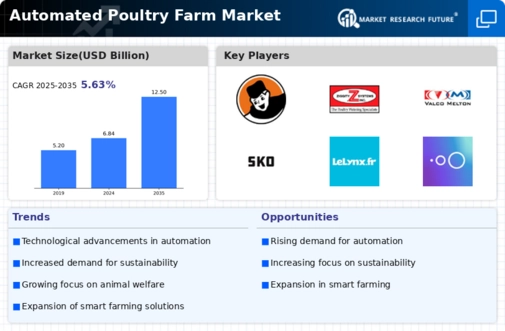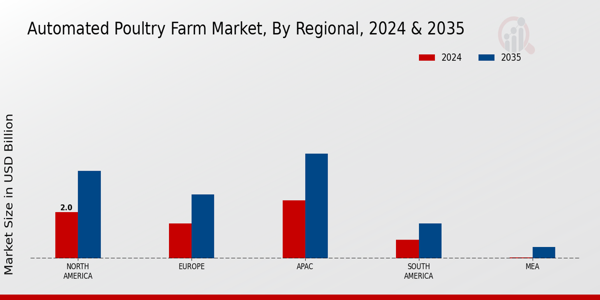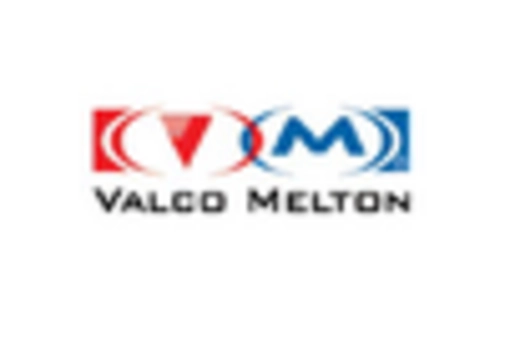Market Growth Projections
The Global Automated Poultry Farm Market Industry is poised for substantial growth, with projections indicating a market size of 6.84 USD Billion in 2024 and an anticipated increase to 12.5 USD Billion by 2035. This growth trajectory suggests a compound annual growth rate of 5.63% from 2025 to 2035. Factors contributing to this expansion include technological advancements, rising demand for poultry products, and increasing investments in automation. The market's evolution reflects a broader trend towards modernization in agriculture, where efficiency and sustainability are becoming paramount.
Technological Advancements
The Global Automated Poultry Farm Market Industry is experiencing rapid technological advancements that enhance operational efficiency. Innovations such as artificial intelligence, machine learning, and IoT devices are being integrated into poultry farming practices. These technologies facilitate real-time monitoring of poultry health, feed management, and environmental conditions, leading to improved productivity. For instance, automated feeding systems can optimize feed usage, reducing waste and costs. As a result, the market is projected to reach 6.84 USD Billion in 2024, reflecting the growing adoption of these technologies across the globe.
Labor Shortages in Agriculture
Labor shortages in the agricultural sector are significantly impacting the Global Automated Poultry Farm Market Industry. Many regions face challenges in sourcing skilled labor for traditional farming practices, leading to increased operational costs and inefficiencies. Automation offers a viable solution by reducing the reliance on human labor while maintaining productivity levels. Automated systems can perform tasks such as monitoring, feeding, and cleaning with minimal human intervention. This shift not only addresses labor shortages but also enhances overall farm management. As a result, the market is likely to witness a compound annual growth rate of 5.63% from 2025 to 2035.
Regulatory Support and Incentives
Regulatory support and incentives play a crucial role in shaping the Global Automated Poultry Farm Market Industry. Governments worldwide are recognizing the importance of modernizing agricultural practices to enhance food security and economic stability. As a result, various initiatives and subsidies are being introduced to encourage the adoption of automated systems in poultry farming. These policies not only facilitate access to advanced technologies but also promote research and development in the sector. Such regulatory frameworks are likely to foster innovation and investment, contributing to the overall growth of the market.
Rising Demand for Poultry Products
The Global Automated Poultry Farm Market Industry is driven by the increasing demand for poultry products, including meat and eggs. As populations grow and dietary preferences shift towards protein-rich foods, the need for efficient poultry production systems becomes paramount. This demand is particularly pronounced in developing regions, where urbanization and rising incomes contribute to higher consumption rates. The automation of poultry farms allows producers to meet this demand more effectively, ensuring consistent supply and quality. Consequently, the market is expected to expand significantly, with projections indicating a growth to 12.5 USD Billion by 2035.
Sustainability and Environmental Concerns
Sustainability and environmental concerns are increasingly influencing the Global Automated Poultry Farm Market Industry. With growing awareness of the ecological impact of traditional farming practices, there is a shift towards more sustainable methods. Automated poultry farms can implement practices that minimize waste, reduce carbon footprints, and optimize resource usage. For example, precision farming techniques can lead to better feed conversion ratios and lower greenhouse gas emissions. This trend aligns with global sustainability goals, encouraging investments in automation technologies that promote environmentally friendly poultry production. The industry's commitment to sustainability is expected to drive further growth.
























Leave a Comment